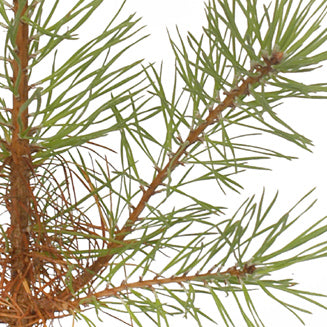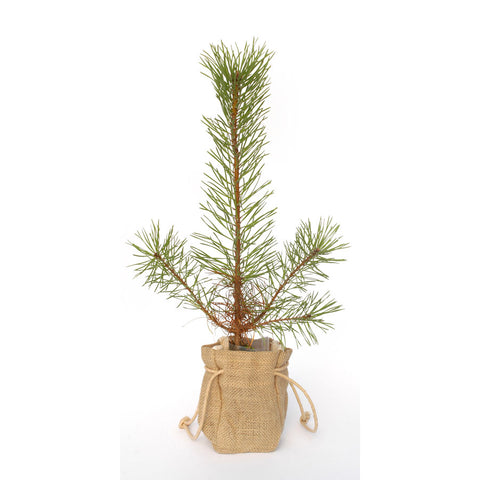Scots Pine Tree Facts and Information
Scots Pine Tree Facts and Information
- Latin name: Pinus sylvestris
- Native Words: Old Irish (), Scots Gaelic (Ghuibhas), Old English (), Welsh (ffynidwydden), Eastern Celtic ()
- Ogham Sign: IA
- Height When Mature: 30–40m (98–130ft)
- Height After 10 Years: 2–3m

Scots Pine Botanical Description
The Scots Pine is Britain’s only native conifer tree. Ancient Scots Pine forests are now rare, but the species is widely planted across the UK. It can grow as a tall, single-trunked tree with a high crown, or as a multi-stemmed, spreading variety. The bark is red-brown and scaly, and the tree produces cones as it matures.
Scots Pines can live for 250–300 years. Their blue-green needles grow in pairs, and the resin-coated flower buds open in May. Both male and female flowers grow on the same tree, with cones taking two years to develop before opening on the branch to release wind-dispersed seeds that travel 50–100m.
A heavy fall of acidic needles suppresses other plants beneath the tree. Ironically, Scots Pine doesn’t regenerate well in these conditions — it prefers open areas, often aided by squirrels or fire for seed dispersal. It often grows alongside birch and rowan trees.
The tree produces resin (sap) that deters insect attacks and preserves dead trees, making fallen pines a notable forest feature.
Scots Pine Natural History and Ancient Wisdom
Today, natural Scots Pine forests cover just 17,000 hectares in the Scottish Highlands. The species once dominated vast stretches of the Caledonian Forest but was heavily felled during the 17th and 18th centuries for fuel, ship masts, and resin for sealing barrels.
Notable remnants of native forests survive in Glen Affric and Beinn Eighe. The last naturally growing Scots Pine in Ireland died in 1866. Much of the tree’s folklore has been lost with the ancient Pictish culture. The tree is listed in the old Gaelic alphabet under “Peith,” an alternate name.

Scots Pine Place Names
- Allt na Ghuibhas (Wester Ross)
Scots Pine Wildlife Rating
Scots Pine ecosystems support rare wildlife. The Capercaillie performs mating displays (leks) in pine forest clearings. Crested Tits hunt for insects among the branches, while Scottish Crossbills extract seeds from cones using their unique crossed beaks.
Scots Pine Good Points / Bad Points
- Gives a stately aspect to large gardens.
- Produces resin that seeps from the trunk.
- Drops dense needles that inhibit other plant growth beneath.
Buy a Scots Pine Tree
Send a meaningful gift with Tree2mydoor, the award-winning tree gifts company with over 20 years of experience. A Scots Pine sapling is a long-lasting and majestic gift, perfect for garden planting and wildlife support.



































































